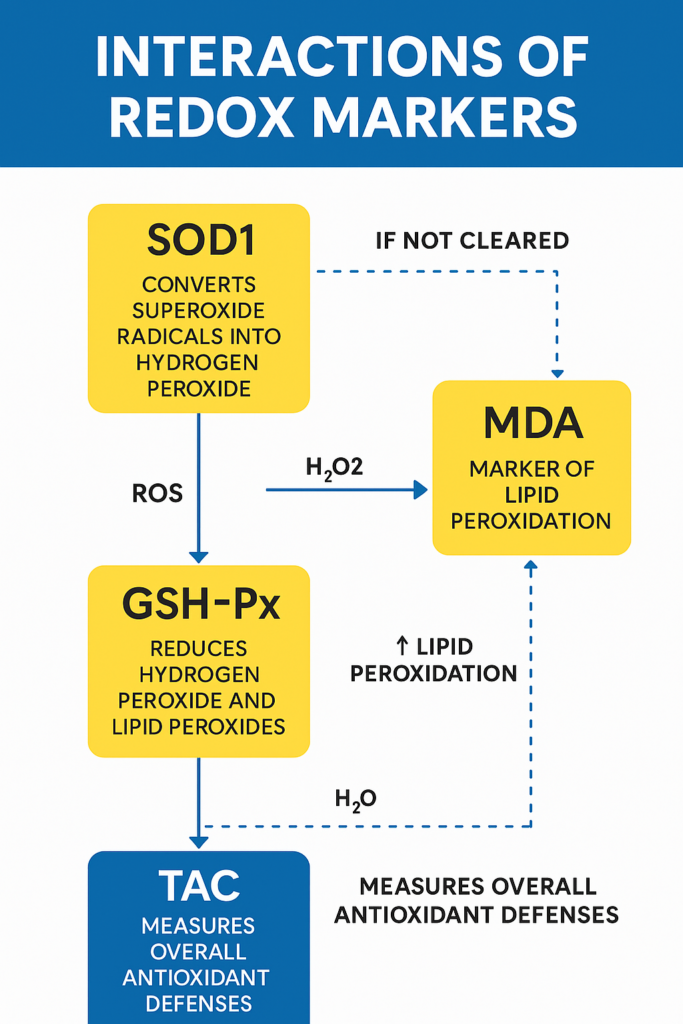Blog Post
Understanding Redox Biomarkers: SOD1, GSH-Px, MDA, and TAC
Redox biomarkers in oxidative stress research play a crucial role in understanding how cells maintain balance between damaging reactive oxygen species (ROS) and protective antioxidants. Among the most informative markers are SOD1, GSH-Px, MDA, and TAC. These markers reflect both active defenses and the consequences of oxidative damage in biological systems.
🧪 What Are Redox Biomarkers?
Redox biomarkers help quantify oxidative stress, which arises when the production of ROS outpaces the body’s ability to neutralize them. This imbalance leads to damage of proteins, DNA, and cell membranes—affecting health across species from humans to livestock.
🔬 Key Biomarkers and Their Functions
Here’s a breakdown of how these four redox markers interact:
1. SOD1 (Superoxide Dismutase 1)
SOD1 is an antioxidant enzyme that converts superoxide radicals (O₂⁻) into hydrogen peroxide (H₂O₂), reducing immediate oxidative damage.
2. GSH-Px (Glutathione Peroxidase)
This enzyme uses glutathione (GSH) to reduce hydrogen peroxide into water and detoxify lipid peroxides—preventing cell membrane damage.
3. MDA (Malondialdehyde)
MDA is a byproduct of lipid peroxidation and acts as a marker of oxidative injury. Elevated levels suggest the antioxidant system is overwhelmed.
4. TAC (Total Antioxidant Capacity)
TAC measures the cumulative ability of all antioxidants in a sample to counteract ROS. It reflects overall redox status.
🔄 How These Markers Work Together
A simplified biological flow looks like this:
ROS → [SOD1] → H₂O₂ → [GSH-Px] → H₂O
↓ ↓
If unchecked → Lipid Peroxidation → MDA ↑
↓
All defenses measured by → TAC

🐾 Cross-Species Relevance
These biomarkers are not exclusive to humans. Researchers studying bovine, canine, feline, porcine, and primate models use these same markers to monitor redox balance in contexts such as inflammation, nutrition, aging, and metabolic health.
🔗 Links
✅ Summary
Understanding and measuring SOD1, GSH-Px, MDA, and TAC helps researchers evaluate oxidative stress and antioxidant defense across a wide range of applications. These redox biomarkers offer insight into cellular health, stress response, and therapeutic efficacy in both human and veterinary science.

